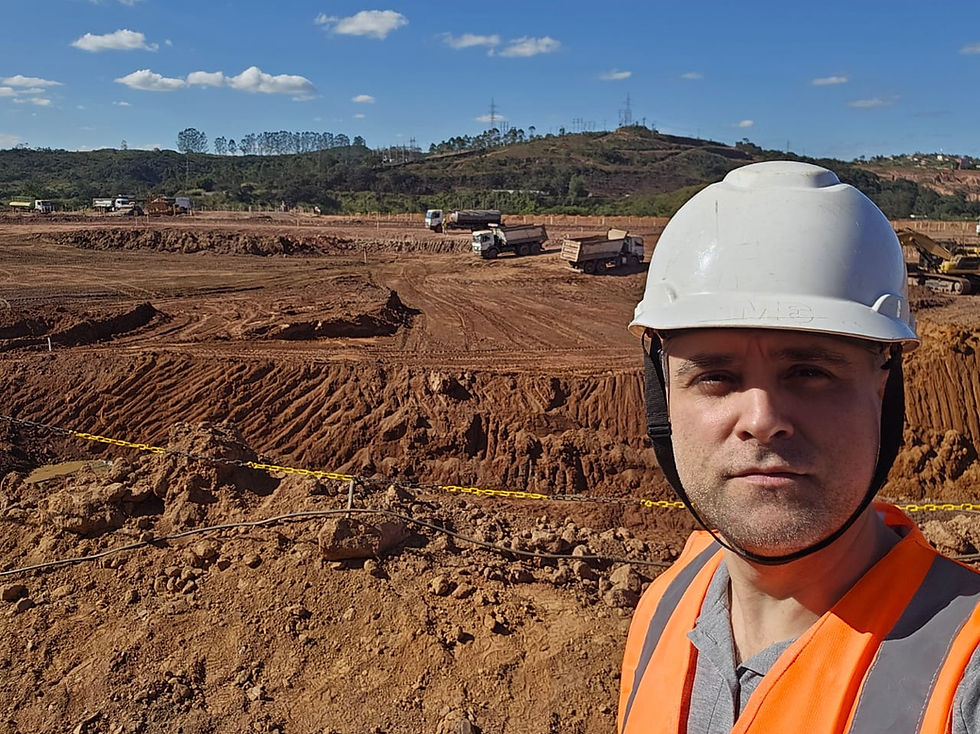Engineering That Connects Theory To Industrial Practice


Mechanical Seal
Through commercial representation, we supply mechanical seals specially designed for the application.
We offer:
-
Component mechanical seals
-
Cartridge mechanical seals
-
Single mechanical seals
-
Double mechanical seals
-
Split mechanical seals
-
Pump mechanical seals
-
Reactor mechanical seals
-
Agitator mechanical seals
-
Bearing protectors

Mechanical Seal Restoration
Save valuable resources by refurbishing mechanical seals:
Recovery levels:
-
Level 1: Restores seals to original condition.
-
Level 2: Upgrades seals with higher-quality materials.
-
Level 3: Modifies seals for improved reliability and durability.
-
Level 4: Replaces with new seals at a discount.

Pump Rental
Through partnerships, we provide pumps for rental and sale to the following segments:
-
Sanitation
-
Mining
-
Industry
-
Civil Construction
Among the most common applications are mine face clearance, SUMP and pit bottom drainage, water drainage with or without residue, wastewater treatment plants, well and ditch drainage, pumping juice with or without bagasse, water with pulp residue, stream diversions, among others.

What is Groundwater Lowering?
Before talking specifically about groundwater table lowering, let us first understand what a water table is.
The term “water table” is widely used in Brazil to describe a layer of water that accumulates in the soil at any depth. However, it is not the most technically accurate term to refer to the presence of water underground.
The more appropriate technical term is aquifer or groundwater table, which may be an unconfined aquifer (free water table) or a confined aquifer, as illustrated in the figure below.
The water table, like any other aquifer, is formed by the infiltration of rainwater or natural sources that penetrate the soil and remain stored until they reach an impermeable layer (such as clay or solid rock), or when the soil becomes saturated.
This underground reservoir is one of the main sources of drinking water supply, especially in rural areas.
Characteristics of the Water Table
The water table has variable depth, since its level can change depending on factors such as soil type, topography, climate, and regional vegetation.
It may be found only a few meters below the surface or several tens of meters deep.
In addition, the water table is strongly influenced by precipitation. In Brazil, rainfall is the determining factor: its depth and level vary according to climatic conditions and the amount of rain in the region.
During dry seasons, the water table may drop, while in rainy periods it can rise.
As already mentioned, the water table is the most superficial layer of an aquifer, which is a geological formation capable of storing and transmitting groundwater.
This concept is important in several areas, such as civil engineering (for drainage or foundation projects), agriculture (for irrigation), and public water supply.
In the construction field, for example, water present in the soil can make it difficult—or even impossible—to execute the work. In such cases, the water level must be temporarily lowered to an appropriate depth that allows the project to be carried out. This process is called groundwater table lowering (or simply dewatering in English).
Although not every lowering operation refers strictly to the phreatic level, in Brazil it is commonly known by this expression.
We are specialists in groundwater table lowering.
If you have any questions, please feel free to contact us.
Groundwater Lowering with Wellpoint Systems
Groundwater lowering, more commonly known in Brazil as groundwater table lowering, is an essential technique in civil construction and mining projects, ensuring the safety and feasibility of works in areas with high soil saturation.
The most cost-effective method is the use of wellpoint systems (filter tips), which we will explore in detail below.
What Are Wellpoint Systems?
Wellpoint systems are devices installed in the ground to drain and control the level of groundwater. They are composed of perforated PVC or steel pipes, wrapped in filter material, which allow water to pass through while retaining soil particles.
The wellpoints are connected to a pumping system that removes the accumulated water, thereby lowering the groundwater table.
How Does Groundwater Lowering with Wellpoints Work?
The process of groundwater lowering with wellpoint systems involves several stages:
-
Soil Analysis: The first step is a detailed analysis of the soil and groundwater table, determining depth and distribution of the subsurface water.
-
Installation Design: Based on the analysis, an installation design is developed, defining the number of wellpoints, their spacing, and insertion depth.
-
Drilling and Installation: Boreholes are drilled in the soil as per the design, where the wellpoints are inserted. They are connected to a piping system that channels the water to suction pumps.
-
Pumping: The pumps are activated to remove the infiltrated water, lowering the groundwater level to the desired depth.
This process can be observed in the animation below, where the diagram shows a wellpoint installed in the ground, the saturated area to be lowered, and subsequently the dry area where the construction can safely proceed.
Benefits of Using Wellpoint Systems
The use of wellpoints for groundwater table lowering presents several benefits:
-
Efficiency and Speed: This method allows for fast and efficient lowering, which is essential for projects with tight deadlines.
-
Extraction Capacity: Deep wells allow extraction of large water volumes, making them ideal for large-scale projects. Wellpoints are highly effective at moderate depths and in more permeable soils.
-
Precise Control: They provide precise control over the groundwater level, preventing excessive lowering and potential structural damage.
-
Risk Reduction: Minimizes risks of landslides and soil instability, ensuring operational safety.
-
Flexibility: Can be used in different soil types and depths, adapting to the specific requirements of each project.









